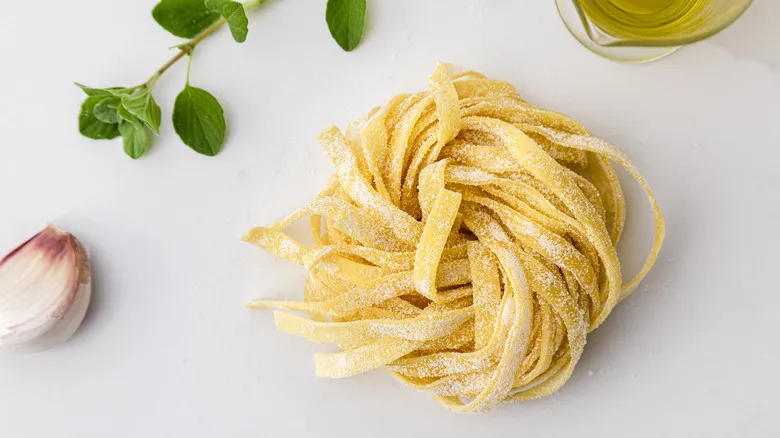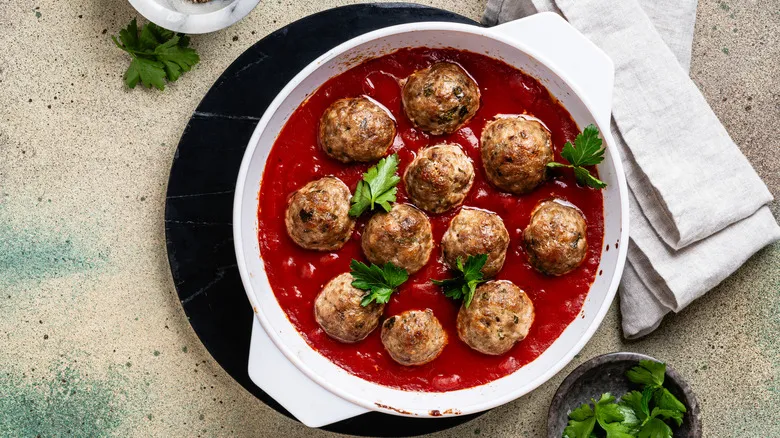Cream cheese is the secret ingredient for moist meatballs

Cream cheese has a subtly tangy and rich taste on its own, making it an excellent addition to desserts and dips when you have leftovers. If you're considering incorporating it into your meatballs, now is the perfect moment—just remember that a little goes a long way. You want to avoid altering the texture of the meatballs too much, so for about a pound of meat, a single generous spoonful of cream cheese should suffice. Mix it in gently to prevent a common mistake that can ruin meatballs, then shape them as you normally would.
To keep lean meatballs from becoming too dry, there are several strategies you can employ. Always ensure they reach the USDA-recommended internal temperature of 160 degrees Fahrenheit, but try not to exceed that, as higher temperatures can lead to dryness due to moisture loss. Incorporating fresh vegetables like onions and bell peppers into the mixture can also help, as they release moisture during cooking. Lastly, be cautious with the amount of breadcrumbs you add, as they can absorb moisture from the meat before it has a chance to cook properly.
Recommended

How To Choose The Best Grapefruit At The Grocery Store Every Time

Is It Better To Peel Hard-Boiled Eggs When They're Hot Or Cold?

When To Use Fresh Vs Dry Pasta

How Do You Even Cut Waffle Fries, Anyway?
Next up

